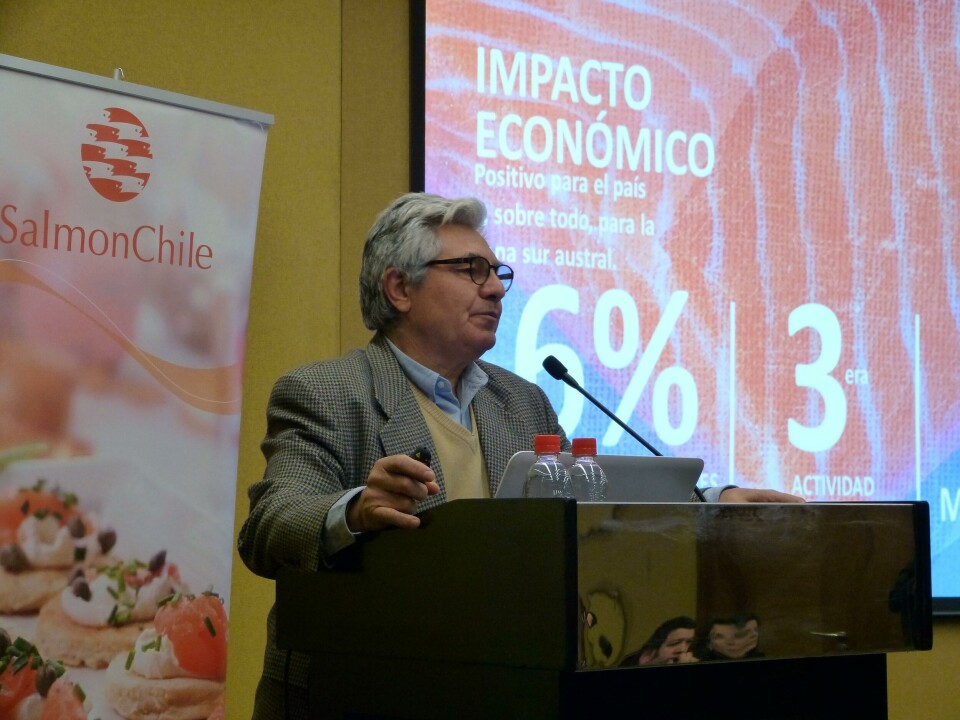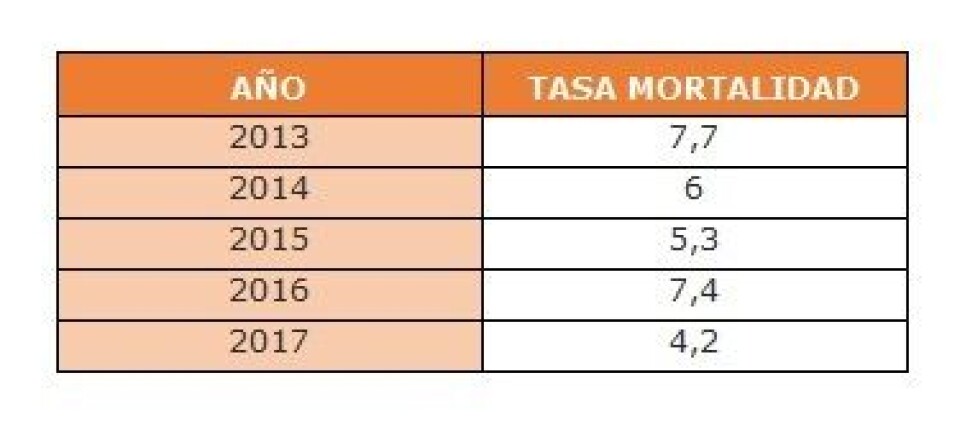
Chilean salmon farmers cut mortality to 4.2%
Salmon farmers belonging to industry association SalmonChile reduced mortality by 44% in 2017, the organisation revealed in a sustainability report.

Fish deaths among the 15 member companies fell from 7.4% in 2016 to 4.2% last year, the lowest mortality for five years. The figure is calculated by dividing the fish grown during the cycle by the number dead fish and does not consider fish that for productive or normative reasons are discarded during the breeding process.
The number of Caligus (lice) dropped from 2.15 to 2.07 per fish, also the lowest in five years, and use of anti-parasitic drugs was reduced by 38%, from 3.89 grams per tonne of salmon to 2.45 grams. The number of oral and bath treatments fell by 10%.
Antibiotic use also fell to its lowest figure in five years. SalmonChile’s members used 454.7 grams per tonne on average.
The report it the third produced by SalmonChile, following the first in January last year and a second in September.
Policy of transparency
Presenting the report this week, SalmonChile president Arturo Clément said: “This union effort obeys the new policy of transparency and links with communities and local leaders, who demand more information and greater knowledge of the productive processes of the sector. This third Sustainability Report confirms our intention to be a transparent and open-door industry.”
The report adds that the industry employs 20,000 people directly, and supports another 41,000 jobs in the supply chain, making it the most important industry in Chile’s southern zone in terms of both jobs and export value.
More than 15,000 workers received 242,532 hours of training between them, and there were 740 “direct actions” with local communities to foster closer relationships and contribute to local welfare.
SalmonChile companies paid US$14 million to municipalities in operating taxes, a figure that rises to $21m if non-member salmon farming companies are included.























































